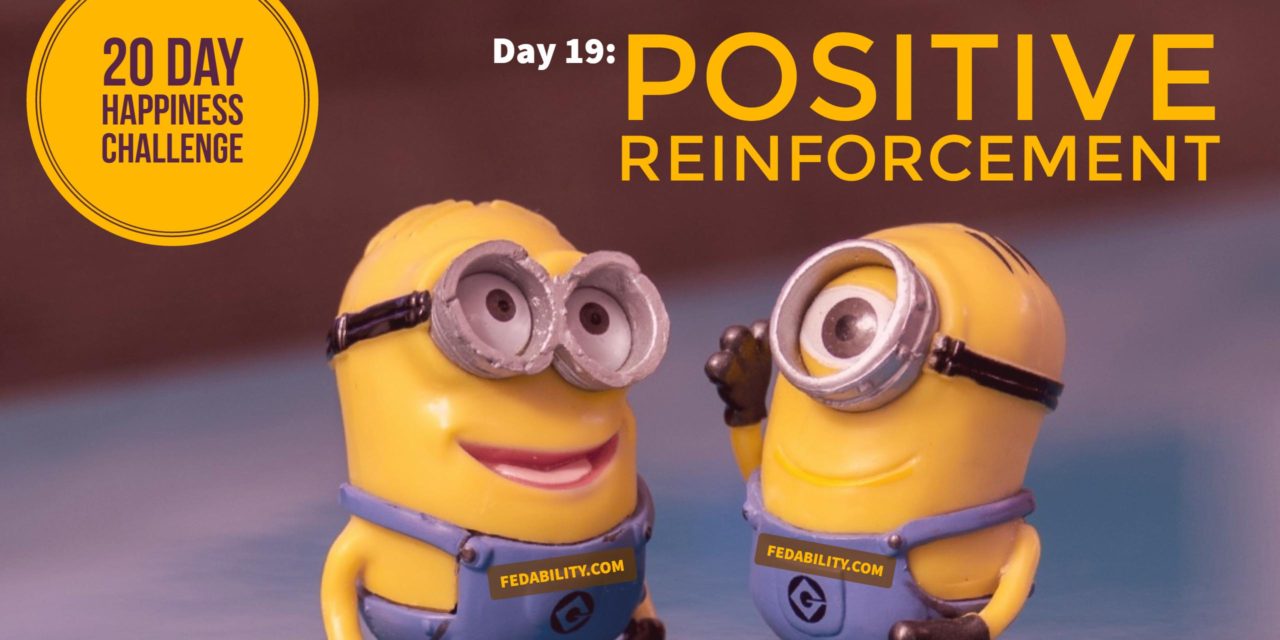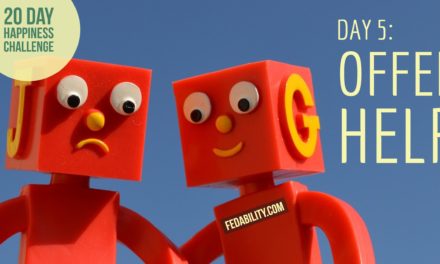The less influence you have with someone (read: less power), the less you can influence them. Or, said differently, it’s hard to get people to do something if you don’t have the authority to make them do it. One way to gain that influence is through positive reinforcement. And for day 19 of the Happiness Challenge, you’re going to apply positive reinforcement with someone you have very little influence over. Someone who doesn’t work in your own department.
What is positive reinforcement? In its truest meaning in psychology, it’s applying a stimulus that increases the probability that a certain behavior will happen again.
If you think about it, what seems to come most naturally to many of us is to apply negative reinforcement. That is, to stop a particular behavior.
Why does an employee get written up? To stop a behavior. Why are their rules about workplace etiquette? To stop a behavior.
So what does this have to do with day 19 of the Happiness Challenge?
When we think about how to influence, we often think in terms of carrots versus sticks. And, today, in the name of the Happiness Challenge, you’ll be handing out a carrot. And that carrot will be give positive feedback.
By giving positive feedback (or positive reinforcement) you will be directly or indirectly telling someone what behavior you would like to see again. Because if you really think about it, there’s probably been any number of instances when you’ve done something to help someone, and they acted as though they weren’t aware. Or, that it wasn’t all that appreciated. And, chances are that after a few attempts, you were less likely to go out of your way to help that person again.
Types of positive reinforcement
An article by VeryWell, describes 4 types of reinforcements.
- Natural – These are positive things that are naturally occurring as a result of an action (or inaction).
- Token – If you are familiar with gamification, you know that people respond well to points and badges.
- Tangible – Similar to token reinforcement, these are physical (rather than a ‘point’) things that are given to encourage a behavior. For example, a certificate or a coin.
- Social – These are expressions of approval. The article describes this as telling someone, “Good job”.
Now, of course, we know that positive feedback has to be more specific to work. Right?
What exactly is a ‘good job’? You may have meant they did a good job because the work was done accurately. They may have thought you meant it was good work because it was done quickly. As a result, the person may place greater emphasis on getting things to you quickly. And then you begin to wonder why the quality of their work has gone down.
But, I digress.
Today, your challenge is to think of something that someone outside of your department has done, that you’d like them to do for you again. That is, you will be giving positive reinforcement.
Now, the hardest part of keeping on track with a challenge is the accountability and support to keep on going. I hope you’ll follow along with me and the other Fed Fans that are participating. I also hope that you’ll share your successes with us either on twitter #happieratwork or on the Fedability facebook page. You can find me on twitter @danaesims_iopsy.
I look forward to hearing how today’s challenge goes! Leave a comment in the space below.
Did you miss day 18 of the Happiness Challenge? That’s ok! You can still read about getting someone else’s perspective.
Ready to go on to day 20? Read about giving a thank you note to an administrative assistant to show you appreciate them.





